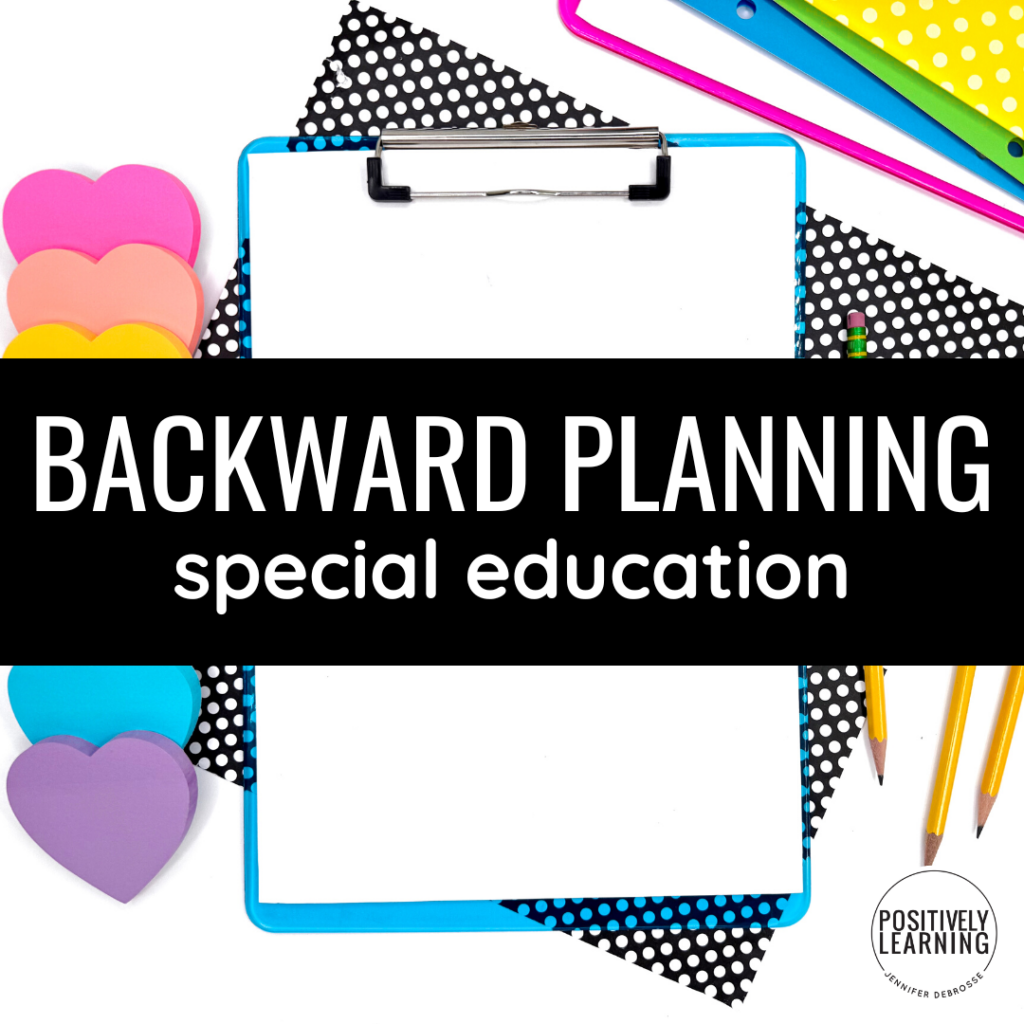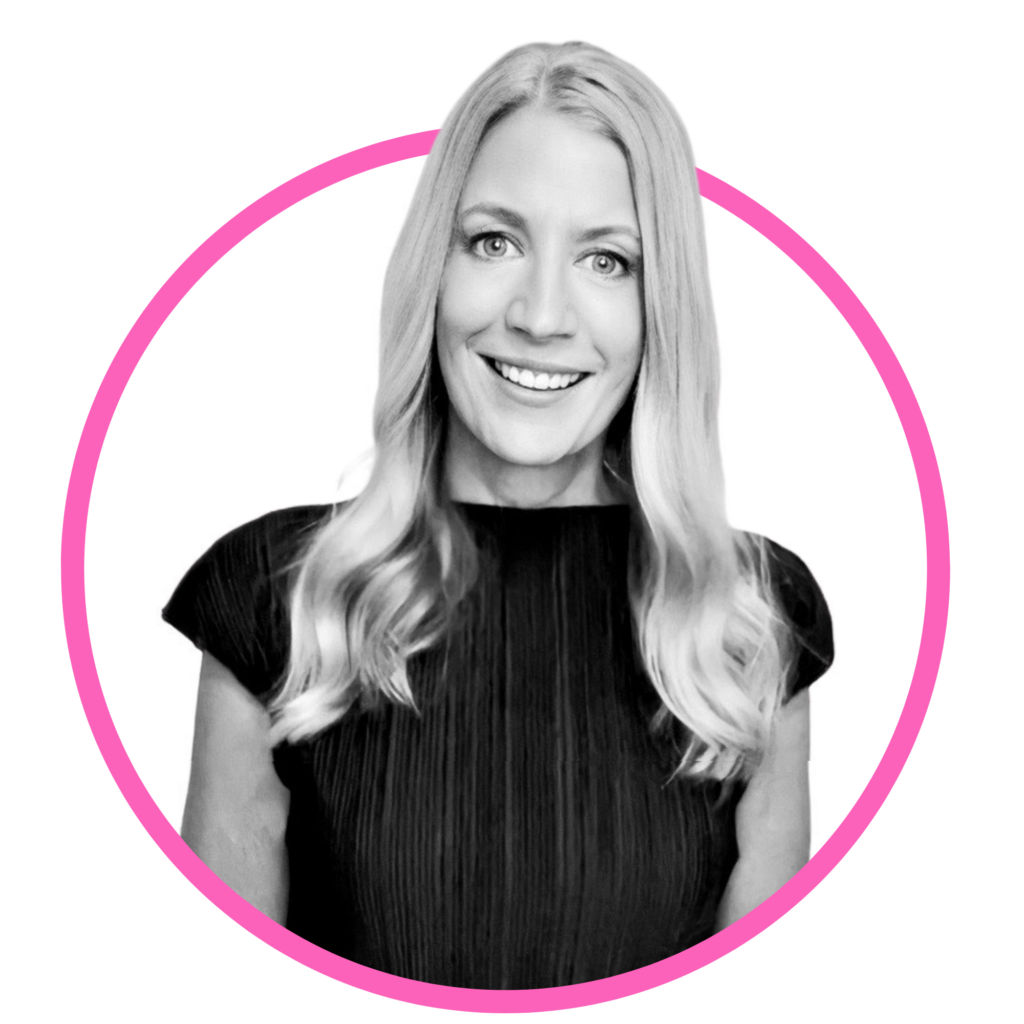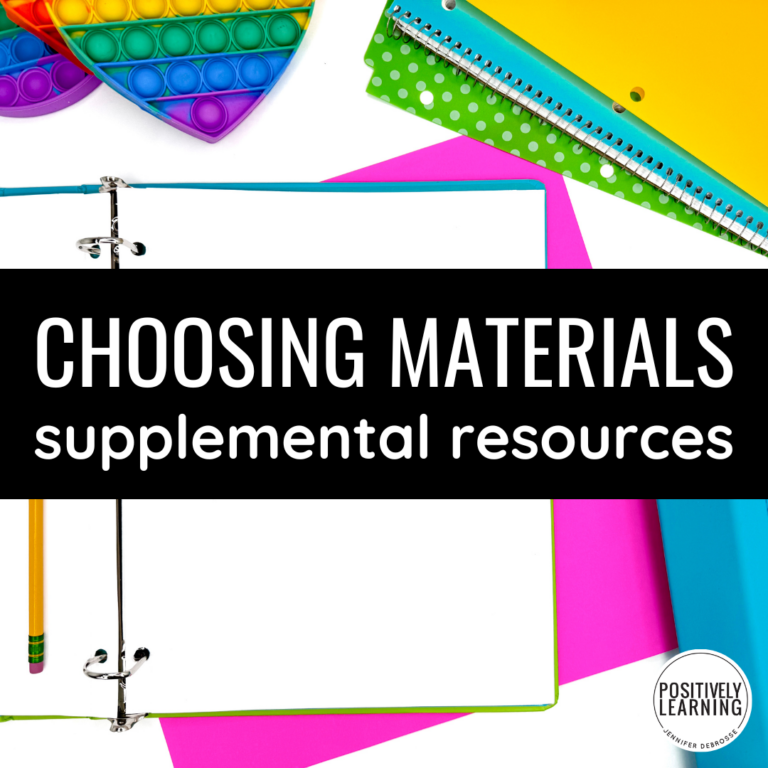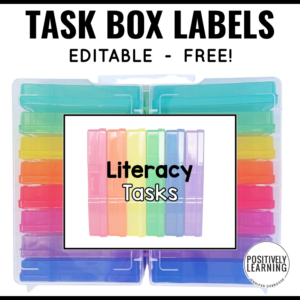
As special educators, we're very familiar with doing whatever works for our students and there are many days (weeks, months) that it's feels like we're always trying something different in hopes that it's exactly what students need. Some may refer to it as throwing spaghetii at the wall, I call it on-the-job research!
In this blogpost, I'm sharing one strategy that does remain consistent in all lesson planning decisions – backward planning. It's a straightforward, no-frills, yet powerful approach to planning – especially in the world of special education. It's all about making sure that every lesson you plan really hits home and leads to some great achievements for your students.

Table of Contents
ToggleUnderstanding Backward Planning: The Basics
At its core, backward planning, or backward design, flips traditional lesson planning on its head. Instead of starting with the lesson activities, we begin with the end in mind – the desired results. It's like knowing your destination before you start driving. Coined by education experts Jay McTighe and Grant Wiggins, this approach ensures that every piece of your teaching puzzle aligns with the final goal: student success.
Just imagine what would happen if you didn't have the end in mind – you could spend hours lesson planning, map out subject area content knowledge, align small group instructional materials and performance tasks, and engage students in explicit instruction. Sounds great, right? But when it comes to students' progress and reflecting on final assessment results, student achievement falls flat.
Why does this happen? The end in mind – or the goal of the lesson outcome – didn't match the subject matter your students were learning. Unfortunately, this is all too common in lesson planning using a traditional design. Backwards planning helps guide the intended learning outcomes from the very beginning by matching the learning objectives of a lesson with the outcome.
Step-by-Step Guide to Backward Design
Identify Desired Outcomes: Begin with the end goal. What do you want your students to know or be able to do by the end of a course or unit? These should be your desired learning outcomes, deeply rooted in big ideas and essential questions that resonate with students' understanding and real-world applications.
Determine Assessment Methods: Next, think about how you'll measure success. Will it be through formative assessments, summative assessments, or a mix of both? Design your final exam and other assessment methods to directly reflect the desired results. This ensures that your assessments are not just afterthoughts (a.ka. “Do they know it or not?”), but integral parts of the learning journey.
Plan Learning Experiences and Instructional Strategies: Now, with the end clearly in sight, you can choose learning activities, instructional activities, and teaching methods that lead students to these identified goals. This is where you decide on the sequence of lessons, the mix of direct instruction, and other student-centered approaches like interactive hands-on tasks and small group discussions.
Backward Planning for Special Educators – Why It Works
Focused Instruction: By keeping the end goal in sight, you ensure that every lesson, activity, and assessment is purposeful and aligned with your objectives, avoiding unnecessary detours in your teaching.
Customized Learning: Special educators can tailor learning experiences to meet the specific needs and abilities of their students, ensuring that instruction is relevant and accessible to all.
Enhanced Student Engagement: When students understand the big ideas and why they're learning something, their engagement and motivation soar. Backward design helps you clarify these connections, making learning more meaningful.
Effective Assessment: Backward planning emphasizes the importance of aligning assessments with learning goals, ensuring that they truly measure what students have learned and can do.
Implementing Backward Design: Practical Tips
Start Small: If you're new to backward design, begin with a single unit or course segment before overhauling your entire curriculum.
Utilize Done-for-You Tools: A scope and sequence can be helpful to refer to when backwards planning, as well as Basic Skills Checklists. These tools can help identify the end goal AND the prerequisite steps to include when planning for instruction – no need to reinvent the wheel:
Collaborate: Engage with team members or participate in professional development opportunities to refine your backward design skills. Sharing insights and strategies can lead to more robust and innovative educational plans.
Reflect and Adjust: After implementing a backward-designed unit, take time to reflect on its effectiveness. Did your students achieve the intended outcomes? What worked well, and what might you change next time?
Hopefully this information has been helpful, but maybe you're not quite sure what this would look like in the everyday BUSY special education classroom setting.
In episode 70 of the Special Educators Resource Room Podcast, I'm spilling all the practical steps I took to use backward design process – both to boost skill acquisition AND save lesson prep time.
Backward planning isn't just a method; it's a mindset that prioritizes clear, student-centered learning objectives and aligns every step of the instructional process with these goals. By adopting this approach, special educators can create more focused, engaging, and effective educational experiences that not only meet but exceed student needs and expectations.
Happy teaching, and remember, in the world of education, sometimes looking backward is the best way to move forward!

Hi there.
I'm Jennifer!
I’m Jennifer and I was a special educator in the elementary school setting over the past decade. I entered the classroom every day dedicated to making learning inclusive AND engaging.









